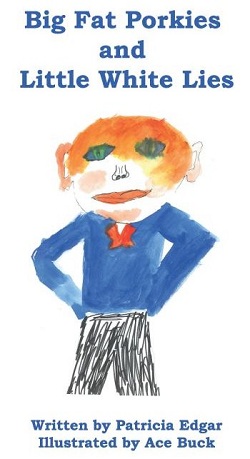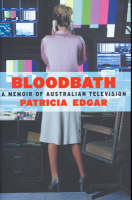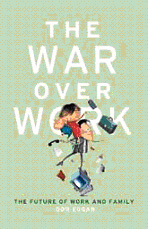
Patricia Edgar & Don Edgar

Children's Television: Regulation, Production, and Funding.
Mucho que ver TV de Calidad, Bogota, Colombia. August 30-September 2, 2007
Patricia Edgar
Addresss to La Asociacion Nacional de Anunciantes de Colombia
The history of children's television in Australia over the past 40 years represents a case study in how to bring about change in the broadcasting system. Television was introduced to Australia in 1956. Every government report on television over the next 25 years expressed deep concern about children's television. We did not know what is known now about brain development, but as a teacher who had a passion for film, I resented the fact that there were no Australian stories on Australian television, especially for children.
Reform came about when the government decided in 1976, to set up an enquiry into self regulation for broadcasters. This was a conservative Government which supported the commercial television interests. The Government was philosophically disposed to de-regulation and self-regulation but the public response took them by surprise.
More than 500 submissions argued the case before the Australian Broadcasting Tribunal's enquiry that television should be regulated to ensure quality and ensure there was Australian programming for children. The concerns expressed related to the content of the programs, the lack of programs designed especially for children, the poor quality of the few that were, the high number of repeats, the amount of foreign material shown, the nature of advertising directed to children, and the exploitation of children through the commercialisation of characters in their programs.
The public airing of these issues before the Broadcasting Tribunal contributed to the industry's and the government's awareness of the extent of public dissatisfaction with children's television and strengthened the Tribunal's resolve to act. A Children's Program Committee (CPC) was formed and given the responsibility for drawing up guidelines for children's programs and advertising directed to children as well as classifying programs specifically designed for them. I was appointed to chair that committee and was chair for five years, during which time we devised Standards and set up systems to classify programs.
The Australian experience provides a case study of a long and often bitter dispute and demonstrates just how difficult it is to bring about change in a commercial broadcasting system. Nevertheless the broadcasting regulator and the public interest prevailed with the government introducing legislation to implement quotas for children's programs. This legislation has been reviewed a number of times over the past 30 years and the Broadcasting Administrator - now called the Australian Communications and Media Authority (ACMA) has changed four times. The Children's Standards are undergoing a further review this year to allow for the impact of new media.
When the Standards were first introduced in 1978 much of the debate revolved around the definition of a children's program. The guidelines called for Australian drama, documentaries, magazine and informational programs designed specifically for children. They stressed programs should not be didactic, instructional and overtly educational but must first be entertaining television and about subjects which interest children, designed and presented in such a way that they could be readily understood and appreciated by children. They were not to be family programs for a general audience.
As with all regulation, the regulated tend to find ways around the rules. Less than three years after the C classification was introduced the stations devised a formula to meet the regulatory requirements which included a half-hour of magazine programming and a high number of repeats of Australian and overseas programs; there was little diversity and no new Australian drama - the most important programming in my Committee's view -was being produced. The networks were simply not interested in trying to succeed with children's programming.
Instead they were so outraged by the Standards and the attempt (as they saw it) to restrict their unfettered commercial approach to programming that they challenged the legality of the Standards in the Federal Court as soon as they were implemented. They lost so they took the battle to the High Court which declared that children's drama standards were invalid. In view of the High Court's decision the Government moved quickly and introduced an Amendment Bill strengthening the Broadcasting Television Act and affirming the Tribunal's powers.
There was always going to be tension between the networks and the regulator as the Tribunal sought to impose a policy for children's television really recquiring the development of programs that entertained but had a serious well developed cultural purpose. An aggressive network would minimise their costs and stretch their audience focus as widely as they could.
The children's programming initiatives by the Australian Government were unique in the world; the fashionable approach to broadcasting regulation was deregulation. It was because of the strong public support for better children's television which was clear to Government that these reforms came about.
Once the Standards were enshrined clearly in legislation, the challenge facing the Children's Program Committee was to find the type of program the legislation was designed to achieve. Angry that they had lost their argument in Court the Networks were not going to produce them. Their argument became that they didn't know what a children's drama looked like and that no one in Australia was equipped to produce such programs anyway. So the Networks, opposed to the regulations they saw as reducing their profit margins, but required by law to provide programs, sat and waited to see what the independent industry could come up with. There was no funding base to encourage the creation of quality children's programs and no institutional base to recruit writers, directors and producers to work in the production field.
To try to find a way around these major issues a number of people gathered for an initial meeting. We decided to use the International Year of the Child 1979 as a platform to build a Children's Television Foundation which would produce model programs to demonstrate the child audience would watch these programs and they could be successful.
Again there was much politicking which led to a report where all States and Commonwealth Governments agreed in principle to set up an Australian Children's Television Foundation. The Working Party's Report recognized that legislative or regulatory action alone was not achieving the required improvements in children's television which were hoped for. Had the industry not taken the belligerent path they took we would have reached our goal more easily and that is for others to learn from.
The report from the Ministers of Education around the country concluded:
“a substantial improvement in the quality and quantity of children's television programming required the spending of a large amount of money. No significant improvement in the quality of children's television programs would be achieved unless a massive effort was made by Governments, the Networks and other funding sources to cooperate in meeting this challenge. The most cost effective way of tackling the problem, and the only way likely to achieve the required breakthrough, was to set up a new organization, an independent body with a national identity, owing allegiance to no commercial interest, which was capable of earning the respect of all parties because of its constructive approach.” The Foundation's major function was to encourage the development of production and transmission of children's programs of quality.
It would do this by: developing writers, directors and producers to work in children's programming; raising finance from government sponsors and other sources for investment in the production of high quality children's television programs; entering into joint investment arrangements for production; sponsoring and conducting research into all areas relevant to children's television; promoting mass media education; marketing programs in which the Foundation had a financial interest.
The Foundation was incorporated as a Company Limited by Guarantee funded by government and private sources, but independent and able to act on a commercial basis. It reported to all States and Territories in Australia. The Foundation would not be a production house with studio facilities but an initiator and broker of production with the independent industry with the power to commission projects it initiated itself.
We were very clear on the purpose of the Foundation: it was to produce top-quality Australian children's television and to contribute to a sense of national identity for young viewers. It would be child and program oriented. It was not there to provide work opportunities and create jobs for the industry. The Foundation was not bent on improving television around the world, just at home. I cannot pretend that any of this was easy
I became Founding Director of the Australian Children's Television Foundation and over a 20 year period the Foundation developed an Australian children's production industry which made programs that were successful by any criteria. Most importantly the programs worked with the audience for which they were intended. We told Australian stories to Australian children; they saw themselves on television and it is difficult to measure the impact and the self-esteem a generation feels when they know they have cultural relevance.
The programs were successful critically as evidenced by the number of awards they won. We created an international market for Australian programs; our drama series sold to more than 100 countries around the world. This was a by-product - not our main purpose - but a very beneficial by-product.
The ACTF demonstrated a new direction and depth for children's television. All programs told stories with three-dimensional characters; they showed the diversity of social groups in Australia. We created new heroes and allowed them to make mistakes, like real people we know, not like Hollywood stars. We told stories about characters who grew through the resolution of conflict and experience. Boys and girls were character leads in the stories; adults were seen to change and be imperfect at times. We raised ethical questions, giving a sense that there is not always a clear right or wrong answer, that anger in itself is not always bad, and that violence has consequences. We showed that women had as much moral and social responsibility as men, and that men had as much emotional responsibility as women, showed feelings, loved and nurtured children.
All programs had a curriculum. They educated while they entertained and they encouraged children to engage in activities other than television, particularly reading. Characters were models who encouraged children to try things for themselves, participate without needing to win. We presented our country to Australian children and showed them that their own lives were worthy of close examination and that they could help shape the future.
The third component of Government cultural policy for children's television, along with regulation and the establishment of a Foundation, was the setting up of the Australian Film Finance Corporation, a film bank which subsidized the production of Australian content: feature films, documentaries and television series. Under this subsidy umbrella, children's production was to be given special treatment. As it turned out the financial deals achieved by the producers of children's television often exceeded those achieved for adult programs. The returns to the Film Finance Corporation from the sale of children's programming outside Australia were far better than anticipated.
The Australian story of children's television demonstrated that regulation alone is not the answer. Regulations need continual monitoring to ensure objectives are met as circumstances change, which they invariably do. The second lesson learnt is that quality will not be met by a free market. Producers must be educated regarding children's needs but also need to be highly creative. Children's production is not the place for would-be or failed producers, writers and directors. It is not an inferior production genre to be used as a stepping stone to Hollywood, although some see it that way.
Thirdly there must be recognition that the best children's programs will not necessarily pay their way. Just as we need to subsidise schools, we need to subsidize the programs that will support the development and enlightenment of children. They are the future but it is the present that counts. We need to give children the best chance in life we can.
All the best for your plans for children's programming in Colombia.









